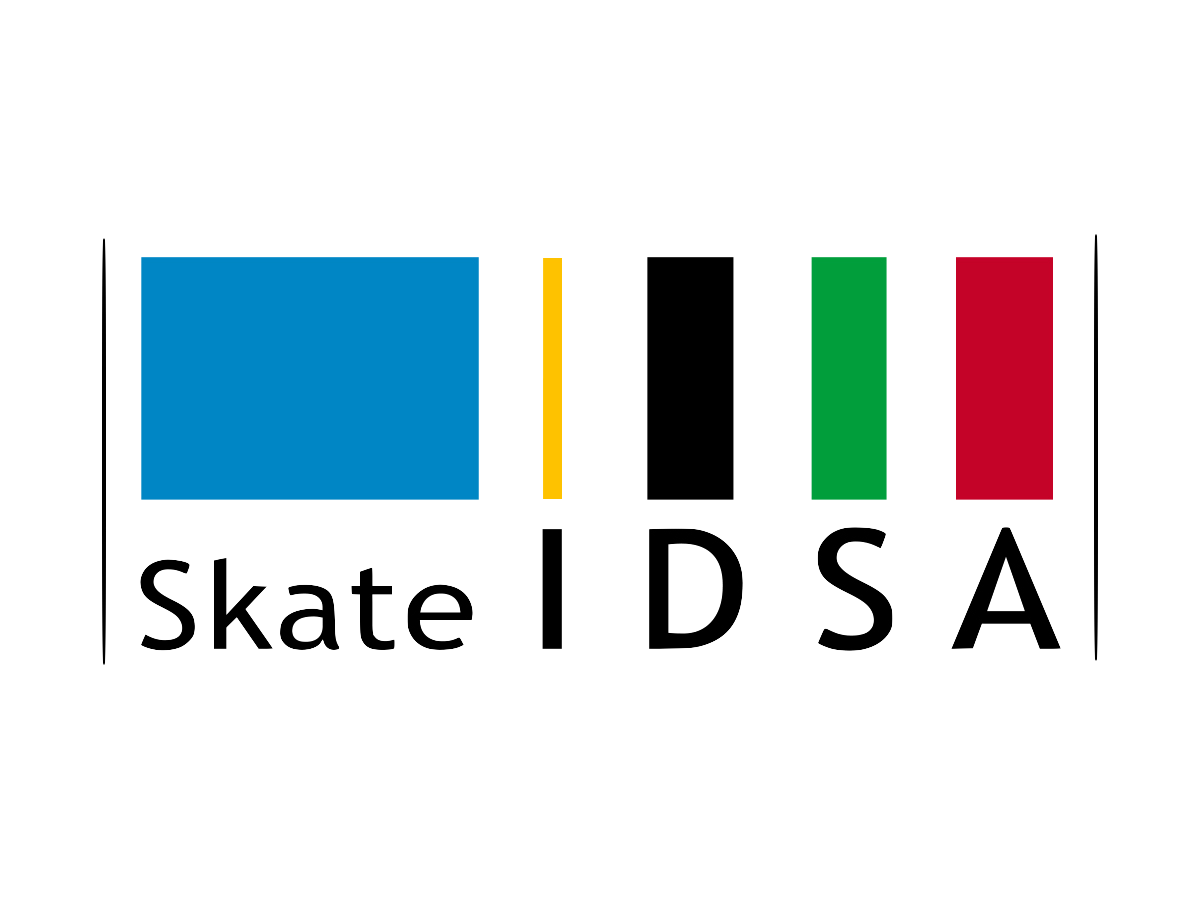The Skate International Distance and Supercross Association (SkateIDSA) is committed to ensuring fair competition for skaters worldwide. We’ve made it a major priority in 2024 to develop a precise track measurement system to support this mission. This guarantees that the results of marathons, 6-hour Ultraskates, and 24-hour Ultraskates are comparable across any location. As a result, skaters can confidently attempt new records on certified tracks close to home and compete with other skaters across the globe. We’re proud to share some details about the new measurement system for those who are curious about the progress.
The Measurement System: Say Hello To The “Jones Counter”
Our new system to certify track lengths is >99.5% precise. This level of precision is achieved by measuring the track using a Jones Counter and a laser measurer. The Jones Counter is a surprisingly simple device that attaches to a bicycle and counts rotations as the wheel turns. To convert rotations into distance, the laser measurer is used to establish a known reference distance (preferably around xx metres) to calibrate the Jones Counter. This system is versatile, as it can be used with any standard bicycle that has a quick release system to remove the wheels. It's compact size enables us to carry it easily in a suitcase across the globe to events or even ship it to course measuring partners with proper training. In the following paragraph, the measurement process is detailed.

The Jones Counter looks like this and can be found here.
Step 1: Calibrating the Jones Counter
Before measuring the track, it is essential to calibrate the Jones Counter. Several factors—including bike wheel size, tire type, temperature, humidity, and the cyclist's weight—can affect the accuracy of measurements. Calibration helps to account for these variables. To start, the laser measurer is used to mark a known distance, typically over a straight, level route. The cyclist then rides back and forth along this distance several times, recording the count of the Jones Counter each time. From this, we calculate the distance represented by each count of the Jones Counter.
Example 1: Say that the Jones Counter counted 50 rotations in a measured distance of 20 meters. Then each rotation is 0.4 meters.

Each lap the middle of the wheel must exactly hit the line. Lena Meringdal and Paul Mc Mahon measuring the UK Ultraskate track
Step 2: Measuring the Track
The goal of the track measurement is to determine the shortest possible distance that can be skated on the course. This ensures that when a skater sets a record, there is no doubt that the distance covered by the skater is at least the race distance. The cyclist measures the track at a slow pace, always keeping a minimum distance of 30 cm from the side of the course, while following the “ideal line” which is generally the shortest path possible.
The cyclist will repeat this process three times. After each round, the measurements taken by the Jones Counter are recorded, and the average distance from these three passes is calculated. This ensures that any small discrepancies or variations are accounted for, resulting in the most accurate and reliable measurement of the track.
Example 2: During the measurement ride, the Jones Counter counted 5,000 rotations. Based on the 0.4 meter calibration from Example 1, this track is 2km.

Setting up the calibration route for the Singapore quarter Ultraskate
Measuring Progress: Tracks Measured So Far
Since the end of 2023, the SkateIDSA has successfully certified several tracks, including:
- USA Maytown Marathon Track
- Singapore Exhibition Center Track
- Spaarndam, Netherlands, Ultraskate Track
- Betteshanger, UK, Ultraskate Track
- Misfits Marathon Track
In 2025, the SkateIDSA will continue to measure tracks, with the Miami Ultraskate scheduled as the next location.
Why Not Use GPS or a Handwheel?
While GPS and handwheels are sometimes used for measuring tracks, neither method provides the same level of precision and consistency as the Jones Counter system.
- Handwheels cannot be calibrated and their inherent tolerances can lead to non-comparable results. For the SkateIDSA to ensure comparable results across tracks, the same handwheel would need to be used for every measurement. However, this would still lead to inaccuracies, as there is no reliable method to calibrate the handwheel, undermining the precision necessary for fair comparisons.
- GPS has shown limitations, particularly when measuring shorter tracks or courses with numerous turns. GPS can struggle with accuracy in these conditions, making it an unreliable choice for exact track measurements.
Why This Matters
The SkateIDSA's primary goal is to ensure fair and comparable competition across all tracks worldwide. By using a standardized measurement system and calibrating it locally, we prevent discrepancies in track length that could create unfair advantages or disadvantages. This approach guarantees that records are set under consistent conditions, regardless of location.
With the use of a simple, locally accessible bike, our measurement system is both practical and scalable, making it easy to implement worldwide. Skaters in any country can compete on tracks measured with the same precision, ensuring a level playing field for all. Stay tuned for more on measurement and record certification in our next post.

After a successful calibration, Rick Pronk measures the Dutch Ultraskate track with the help of Paul Mc Mahon, Lennart van de Peppel and Lena Meringdal
Words by Lena Meringdal

